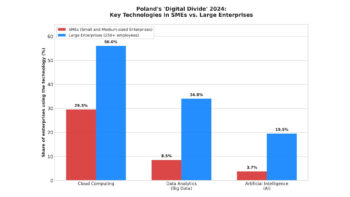Broadcom is entering a key phase of competition in the artificial intelligence infrastructure market. The company has announced the launch of Thor Ultra, a new networking chip designed to support giant AI computing clusters, connecting hundreds of thousands of accelerators. This is a direct response to Nvidia’s dominance not only in GPUs, but also in the area of networking, which is becoming a new battleground in AI data centres .
Thor Ultra is expected to enable data centre operators to create more powerful systems capable of training and scaling generative models – such as those used by OpenAI and Google. Broadcom, hitherto seen mainly as a supplier of key networking chips (including the Tomahawk series), is increasingly bold in entering the custom AI chip segment. The agreement with OpenAI announced the day before, which includes the supply of 10 GW of chips from 2026, signals an ambition: to compete with Nvidia also where it has so far been unrivalled.
The market is huge. Broadcom CEO Hock Tan estimates that the AI chip segment – networking and computing – will grow to $90bn by 2027. The company is already generating more than $12bn in annual revenue from AI, and more deals with hyperscalers (including a new $10bn customer in September) confirm the strategic turnaround.
Competition in AI networks is not just about GPU performance. As models grow to trillions of parameters, what happens between chips becomes crucial. Bandwidth, latency, network topology – these are what determine whether clusters are able to work together effectively. Broadcom emphasises that the Thor Ultra doubles the bandwidth from the previous generation, preparing the chip for extreme compute density environments.
While Nvidia builds complete platforms (GPU + network + software), Broadcom relies on partnerships – offering components and reference designs, allowing infrastructure providers greater flexibility. For customers, this means an alternative to the increasing dependence on a single ecosystem.
Thor Ultra won’t change the balance of power overnight, but it shows that the AI war is entering a new phase. After the GPU comes the networking phase – and Broadcom intends to be where all the data of this revolution flows.












